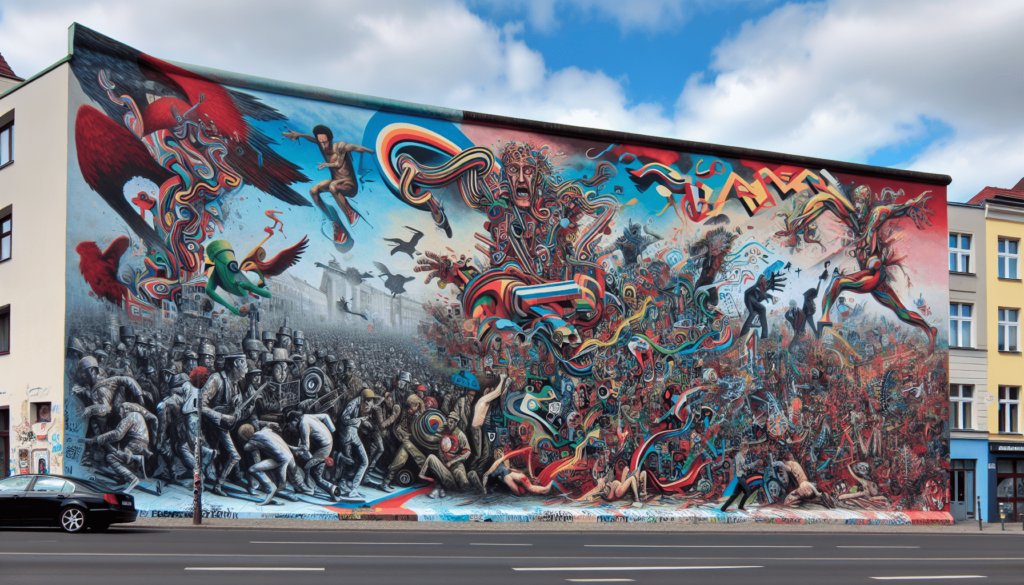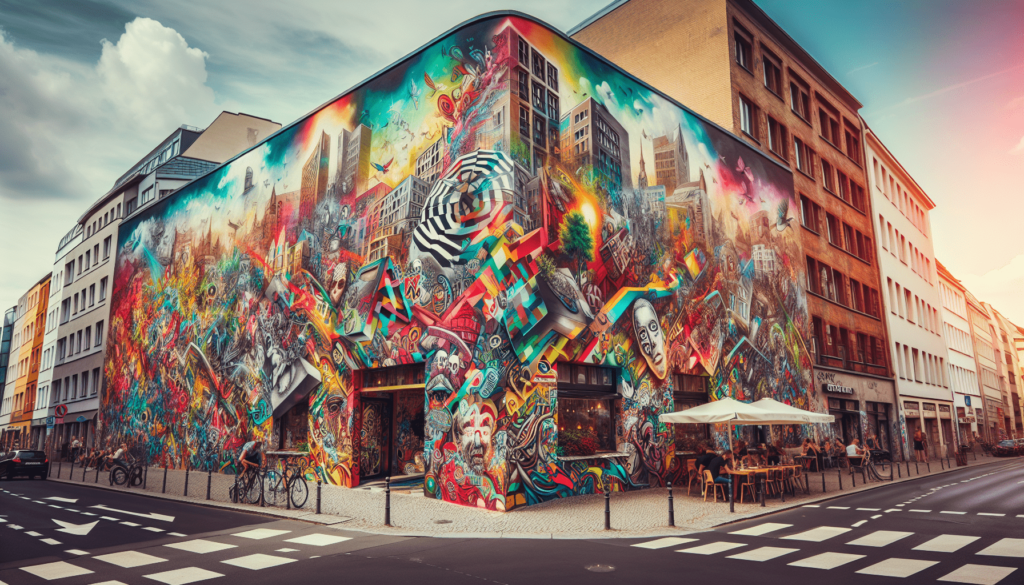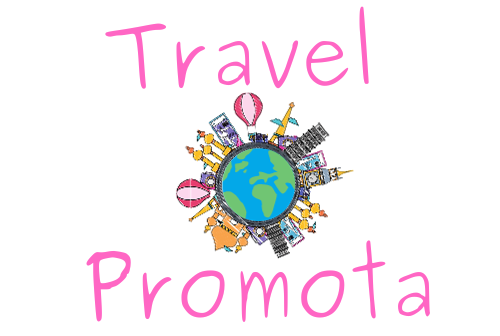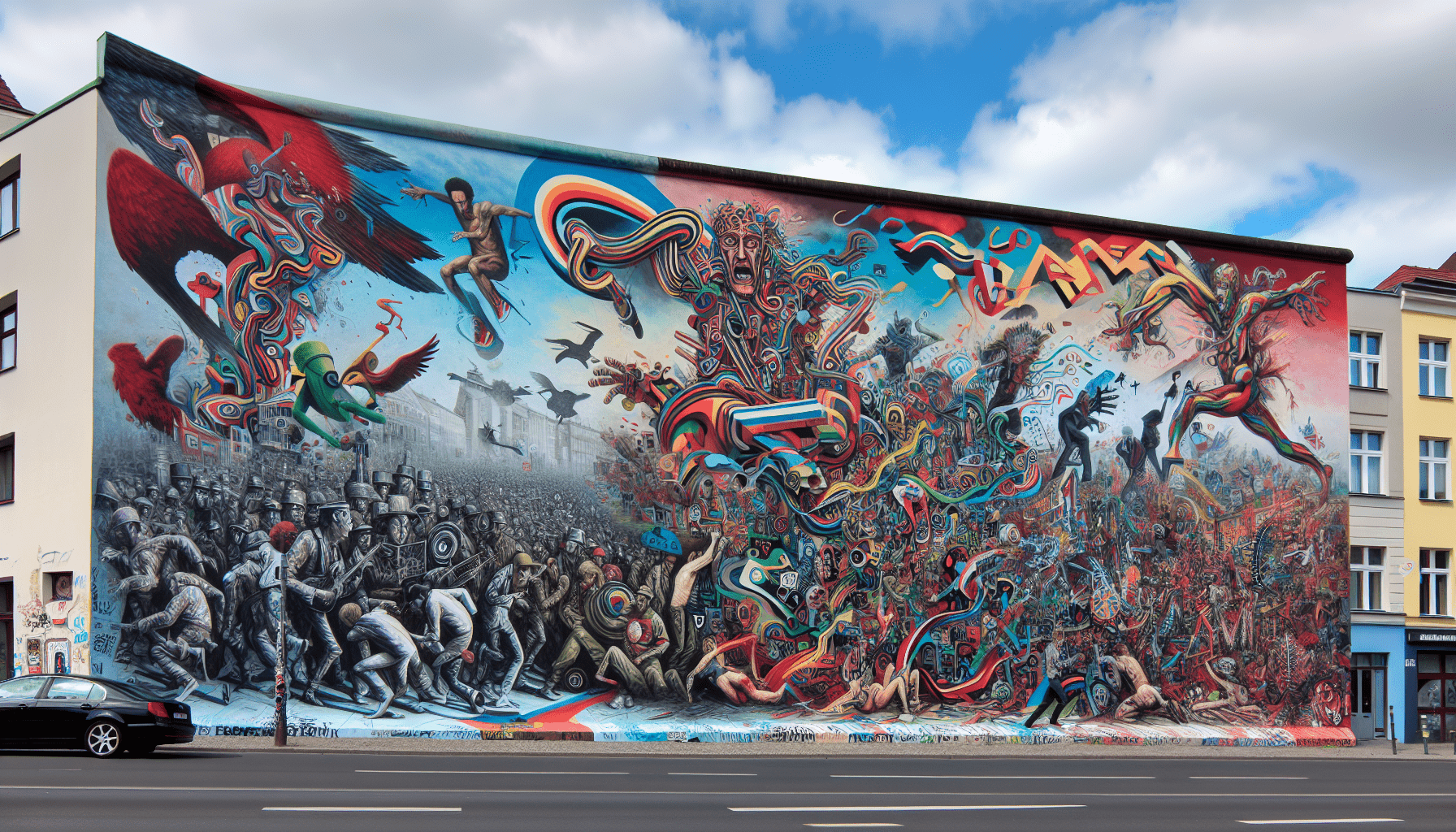Berlin is widely celebrated for its vibrant street art scene, which encompasses a diverse range of styles and artistic expressions. From colorful murals to thought-provoking graffiti, the city’s walls serve as an open canvas for local and international artists alike. Let’s start exploring the vibrant street art of Berlin!
As you wander the streets, you’ll be captivated by the energy and creativity that permeate every corner, making Berlin a true haven for street art enthusiasts. Whether you’re an art aficionado or simply curious about the city’s alternative creative scene, a journey through Berlin’s streets is sure to leave an indelible impression on you.

1. Introduction to Street Art
1.1 Evolution of Street Art
Street art has come a long way over the years, evolving from simple graffiti tags to complex murals and thought-provoking art installations. It is a form of artistic expression that takes place in public spaces, often using buildings and walls as canvases. Street art has its roots in the hip-hop and punk subcultures of the 1970s, where artists began to use spray paint and stencils to create their art on the streets of New York City. Since then, street art has spread around the world, becoming a global phenomenon that continues to evolve and inspire.
1.2 Street Art as an Expression of Culture
Street art serves as a powerful medium for individuals and communities to express their thoughts, emotions, and identities. It can convey political messages, raise awareness about social issues, or simply bring beauty and vibrancy to otherwise neglected spaces. Through street art, artists can communicate with a broader audience and spark conversations and debates within society. It serves as a reflection of the cultural and social landscape of a city, allowing people to engage with their surroundings in a unique and personal way.
1.3 Importance of Berlin in the Street Art Scene
While street art can be found in cities around the world, Berlin has emerged as a mecca for street art enthusiasts. With its rich history, vibrant culture, and progressive mindset, the city has become a breeding ground for artistic expression. Berlin’s open and inclusive environment has attracted artists from all over the globe, resulting in a diverse and dynamic street art scene. The city’s streets are adorned with a plethora of murals, graffiti, and installations that make it a living, breathing outdoor gallery.
2. History of Street Art in Berlin
2.1 The Rise of Street Art in Berlin
Street art first gained prominence in Berlin during the late 1970s and early 1980s when the city was divided by the Berlin Wall. The West Berlin side became a hub for counter-cultural movements and artistic experimentation. Artists used the wall as a canvas to express their discontent with the political situation, creating powerful murals and messages of freedom and unity. After the fall of the Berlin Wall in 1989, the street art scene continued to flourish, with artists expanding their reach beyond the wall and into the city’s neighborhoods.
2.2 Key Influencers and Artists
Several influential artists have played a major role in shaping Berlin’s street art scene. One such artist is BLU, an Italian street artist known for his large-scale murals that often carry strong political messages. Another prominent artist is ROA, a Belgian street artist recognized for his intricate animal murals that can be found on buildings throughout the city. El Bocho, a Berlin-based artist, is known for his humorous and satirical stencil art, while Alias is celebrated for his colorful and abstract geometric patterns. Herakut, a collaboration between artists Hera and Akut, creates emotive and poetic murals that tackle social and personal issues.
2.3 Political and Social Impact of Street Art in Berlin
Street art in Berlin has always held a significant political and social significance. It has been a vehicle for dissent and a form of resistance against oppressive regimes. The murals on the Berlin Wall were not only a means of artistic expression but also powerful symbols of protest and hope. Today, street art continues to shed light on social inequalities, human rights issues, and the need for dialogue and understanding. It has become an integral part of the city’s identity, reflecting its political history and commitment to freedom of expression.
3. Famous Street Art Districts in Berlin
3.1 Kreuzberg
Kreuzberg is arguably one of the most vibrant and well-known street art districts in Berlin. It is a neighborhood with a rich cultural diversity and a strong sense of community. The streets of Kreuzberg are lined with colorful murals, stencils, and graffiti that showcase a wide range of artistic styles and themes. Artists from all over the world come to Kreuzberg to leave their mark on its walls, resulting in a constantly evolving outdoor gallery that never fails to impress.
3.2 Friedrichshain
Friedrichshain is another neighborhood in Berlin that boasts a thriving street art scene. Known for its youthful energy and creative spirit, Friedrichshain is home to numerous iconic street art pieces. The neighborhood’s walls and buildings serve as a canvas for both local and international artists to showcase their talents. From large-scale murals to small-scale stencils and paste-ups, Friedrichshain offers something for every street art enthusiast.
3.3 Mitte
Mitte, meaning “middle” in German, is the central district of Berlin and home to many famous landmarks and attractions. It is also a neighborhood where street art thrives. Mitte’s streets are adorned with a mix of commissioned and unsanctioned street art, creating a unique blend of artistic expression. From the vibrant artworks at the Hackescher Markt to the thought-provoking pieces near Museum Island, Mitte is a must-visit destination for anyone interested in exploring Berlin’s street art scene.
3.4 Wedding
Wedding is a neighborhood in Berlin that has gained a reputation as an up-and-coming street art district. It is a diverse and multicultural area that has embraced street art as a way to beautify its streets and celebrate its unique identity. Wedding’s walls are covered in colorful murals, tags, and paste-ups, offering a glimpse into the vibrant creativity that exists within the community.
3.5 Schöneberg
Schöneberg is a neighborhood known for its leafy streets, charming cafes, and historical significance. It is also home to a burgeoning street art scene that adds an unexpected edge to the area’s traditional charm. Schöneberg’s walls are adorned with a mix of elaborate murals, witty stencils, and eye-catching paste-ups that reflect the neighborhood’s eclectic spirit. Exploring the streets of Schöneberg is like embarking on a treasure hunt, with surprises waiting to be discovered around every corner.
4. Iconic Street Artworks in Berlin
4.1 East Side Gallery
The East Side Gallery is a 1.3-kilometer stretch of the original Berlin Wall that has been transformed into an outdoor gallery. It features over 100 murals created by artists from around the world, making it the longest open-air gallery in the world. Each mural tells a unique story, depicting themes of freedom, unity, and hope. The East Side Gallery is a powerful symbol of Berlin’s history and a testament to the transformative power of art.
4.2 Haus Schwarzenberg
Haus Schwarzenberg is a historic building in Berlin’s Mitte district that has become a hub for street art and urban culture. Its courtyard is adorned with vibrant murals, sculptures, and installations, creating a unique and immersive experience for visitors. The building is also home to galleries, studios, and cultural spaces that foster creativity and community engagement. Haus Schwarzenberg is a testament to the symbiotic relationship between street art and the spaces it inhabits.
4.3 Urban Nation Museum
The Urban Nation Museum is the first museum dedicated to street art and urban contemporary art in Berlin. It showcases the work of both local and international artists, providing a platform for emerging talents and established figures alike. The museum’s façade itself is a work of art, featuring a striking mural that changes periodically. Inside, visitors can explore a diverse range of artworks, installations, and exhibitions that celebrate the vibrancy and creativity of the street art scene.
4.4 Tacheles
Tacheles, meaning “straight talk” in Yiddish, was an iconic art center and cultural space in Berlin. It occupied a former department store and became a haven for street artists, musicians, and performers. Tacheles was known for its eclectic mix of street art, graffiti, and installations, creating a visually captivating and immersive experience. Although it closed in 2012, Tacheles remains an important piece of Berlin’s street art history and a symbol of artistic freedom and expression.
4.5 Teufelsberg
Teufelsberg, meaning “Devil’s Mountain” in German, is an abandoned Cold War listening station turned street art paradise. Located on a man-made hill, Teufelsberg offers breathtaking views of the surrounding forest and cityscape. The buildings that make up the listening station are covered in vibrant graffiti and murals, resulting in a surreal and captivating visual experience. Teufelsberg has become a must-visit destination for street art enthusiasts and photographers alike.

5. Influential Street Artists in Berlin
5.1 BLU
BLU, an Italian street artist, has had a significant impact on the street art scene in Berlin. Known for his large-scale murals and politically charged artworks, BLU’s pieces can be found on buildings throughout the city. His art often tackles issues such as capitalism, globalization, and the consequences of human actions. BLU’s bold and thought-provoking style has made him one of the most respected and influential street artists in Berlin and beyond.
5.2 ROA
ROA, a Belgian street artist, is recognized for his black and white animal murals that can be found in cities around the world, including Berlin. His works often depict animals native to the region, bringing attention to the importance of biodiversity and the relationship between humans and the natural world. ROA’s intricate and detailed artworks have made him a favorite among street art enthusiasts and animal lovers alike.
5.3 El Bocho
El Bocho is a Berlin-based artist known for his humorous and satirical stencil art. His iconic character, “Little Lucy,” has become a recognizable symbol of the city’s street art scene. El Bocho’s art combines wit, social commentary, and a touch of whimsy, creating an engaging and accessible style that appeals to a wide audience. His art can be found on walls and lampposts throughout Berlin, injecting a sense of playfulness into the urban landscape.
5.4 Alias
Alias is celebrated for his abstract geometric patterns and colorful designs. His art often blurs the lines between street art, graffiti, and graphic design, resulting in visually striking and dynamic pieces. Alias’s works can be found in several street art districts in Berlin, adding a vibrant and energetic touch to the city’s walls. Through his art, Alias seeks to challenge traditional notions of art and engage viewers in a multisensory experience.
5.5 Herakut
Herakut is a collaboration between artists Jasmin Siddiqui (Hera) and Falk Lehmann (Akut). Their murals are characterized by emotive and poetic imagery, combining elements of fantasy with social and personal themes. Herakut’s artworks often depict children and animals, conveying a sense of innocence and vulnerability. Their art can be found in various locations throughout Berlin, inviting viewers to contemplate the complexities of the human experience.
6. Street Art Festivals and Events in Berlin
6.1 Berlin Mural Fest
Berlin Mural Fest is an annual festival that celebrates the vibrant street art scene in the city. Artists from around the world are invited to create large-scale murals and installations in various neighborhoods, transforming the cityscape into a visual spectacle. The festival also includes workshops, panel discussions, and guided tours, giving visitors a chance to engage with the artists and learn more about the art form.
6.2 Street Art Week
Street Art Week is a week-long event that showcases the diversity and creativity of Berlin’s street art scene. The event features mural painting sessions, live street art performances, exhibitions, and film screenings. Street Art Week aims to bring together artists, enthusiasts, and the community to celebrate and explore the power of street art as a cultural and artistic medium.
6.3 Backjumps
Backjumps is a pioneering street art festival that was first held in Berlin in 2003. The festival brought together artists, musicians, and performers to create a dynamic and immersive experience. Backjumps emphasized the intersection of street art, music, and urban culture, fostering collaboration and experimentation. Although the festival is no longer held, its legacy and impact on the street art scene in Berlin continue to resonate.
6.4 Urban Spree
Urban Spree is a cultural space and art gallery in Berlin that regularly hosts street art events, exhibitions, and performances. The venue serves as a platform for local and international artists to showcase their work and engage with the community. Urban Spree’s events often feature live painting sessions, music performances, and artist talks, creating a dynamic and inclusive space for street art enthusiasts and the general public alike.
6.5 Various Individual Artist Exhibitions
In addition to festivals and events, individual street artists in Berlin often hold their own exhibitions and showcases. These exhibitions provide a more intimate and immersive experience, allowing visitors to delve deeper into the artist’s creative process and explore their artistic journey. From solo exhibitions in galleries to pop-up shows in unconventional spaces, these events are an opportunity to see street art in a different context and gain a deeper understanding of the artist’s vision.
7. Controversies Surrounding Street Art in Berlin
7.1 Graffiti vs. Street Art
One of the ongoing debates in the street art world revolves around the distinction between graffiti and street art. Graffiti is often associated with illicit tagging and vandalism, while street art is perceived as a more acceptable form of artistic expression. The line between the two can sometimes be blurry, leading to conflicts over what is considered art and what is considered vandalism. In Berlin, there is a delicate balance between embracing street art as an integral part of the city’s cultural landscape and addressing concerns about property damage and aesthetic preferences.
7.2 Legal Issues and Public Perception
While street art is celebrated by many, it is not without its legal challenges. In Berlin, the legality of street art depends on various factors, such as the location, property ownership, and artistic intent. Artists often navigate a complex landscape of permissions, regulations, and public expectations. Furthermore, public perception of street art can vary widely, with some viewing it as an eyesore or nuisance, while others see it as a vibrant form of self-expression. These differing perspectives can create tension and contribute to ongoing debates surrounding street art in Berlin.
7.3 Gentrification and Commercialization
The increasing popularity and recognition of street art in Berlin have also raised concerns about gentrification and commercialization. Some argue that as street art becomes more mainstream and tourist attractions, it risks losing its authenticity and becoming a commodity. Gentrification, driven in part by the appeal of street art, can lead to rising rents and the displacement of lower-income residents and artists. These issues highlight the delicate balance between preserving the integrity of street art and ensuring it continues to benefit the communities in which it is created.
8. Street Art Tours and Guided Walks
8.1 Alternative Berlin Tours
Alternative Berlin Tours offers guided tours that provide insight into the city’s street art scene. Led by local artists and experts, these tours take visitors off the beaten path to explore lesser-known neighborhoods and hidden gems. The tours provide a unique perspective on the history, culture, and social impact of street art in Berlin, offering an immersive and educational experience for participants.
8.2 Street Unseen
Street Unseen offers private street art tours that are tailored to the interests and preferences of participants. Led by experienced guides, these tours bring visitors to some of the most iconic and lesser-known street art locations in Berlin. The guides provide historical context, share stories about the artists and artworks, and encourage active engagement with the art. Street Unseen tours are a great way to discover the rich and diverse street art scene in Berlin at your own pace.
8.3 Urban Art Tours Berlin
Urban Art Tours Berlin specializes in guided tours that showcase the best of Berlin’s street art scene. Led by local artists and experts, these tours provide an in-depth understanding of the city’s street art history, key artists, and iconic artworks. Participants will have the opportunity to explore neighborhoods, visit famous street art districts, and learn about the cultural and social context behind the art. Urban Art Tours Berlin offers both group tours and private tours for a personalized experience.
8.4 Alternative Tours Berlin
Alternative Tours Berlin offers a range of tours that cover various aspects of Berlin’s alternative culture, including street art and graffiti. Led by knowledgeable guides, these tours offer a unique perspective on the city’s street art scene, allowing participants to discover hidden gems and learn about the artists and their motivations. Alternative Tours Berlin aims to provide a deeper understanding of the cultural, social, and political significance of street art in Berlin.
8.5 Fat Tire Tours
Fat Tire Tours offers a Street Art Workshop and Bike Tour that allows participants to explore Berlin’s street art scene while also creating their own art. Led by experienced artists, the tour combines a bike ride through the city’s street art hotspots with a hands-on workshop where participants can learn street art techniques and create their own stencils and graffiti tags. This interactive tour is a unique opportunity to engage with Berlin’s street art scene in a fun and creative way.
9. Impact of Street Art on Berlin Tourism
9.1 Attracting Art Enthusiasts
The vibrant street art scene in Berlin has become a major draw for art enthusiasts, attracting visitors from around the world. The city’s walls and buildings serve as an ever-changing canvas, offering a visual feast for those interested in contemporary art and urban culture. Street art has transformed Berlin into an outdoor gallery, with tourists flocking to explore the neighborhoods and discover the latest artworks. The allure of the street art scene has turned Berlin into a must-visit destination for art lovers of all kinds.
9.2 Effect on Local Economy
The popularity of street art in Berlin has also had a positive impact on the local economy. The influx of tourists who come to explore the street art scene brings with it increased spending on accommodations, food, beverages, and souvenirs. The presence of street art has also revitalized certain neighborhoods, attracting businesses, galleries, and cafes that cater to the growing number of visitors. This economic boost has not only benefited local businesses but also provided opportunities for artists to sell their works and collaborate on commercial projects.
9.3 Cultural Exchange and International Visitors
Berlin’s street art scene has fostered cultural exchange and brought people from different backgrounds together. The city’s open and inclusive environment has attracted artists and art enthusiasts from around the world, resulting in a diverse and dynamic community. The exchange of ideas, techniques, and perspectives has enriched the local street art scene and contributed to a broader global dialogue. International visitors, drawn by the city’s reputation as a street art hub, contribute to this exchange and create a vibrant atmosphere that reflects Berlin’s cosmopolitan character.
10. Beyond Street Art: Berlin’s Creative Scene
10.1 Contemporary Art Galleries
In addition to its thriving street art scene, Berlin is home to numerous contemporary art galleries that showcase a wide range of artistic styles and mediums. From small independent galleries to large institutions, the city offers a platform for emerging and established artists to exhibit their work. These galleries contribute to Berlin’s reputation as a creative and cultural capital, attracting art enthusiasts and collectors from around the world.
10.2 Independent Art Spaces
Berlin’s creative scene extends beyond traditional galleries to include a vibrant network of independent art spaces. These spaces, often run by artists and curators, provide a platform for experimentation, collaboration, and interdisciplinary practices. From artist-run collectives to temporary pop-up spaces, independent art spaces contribute to the city’s dynamic and ever-evolving art landscape, pushing boundaries and nurturing new talent.
10.3 Artist Collectives
Artist collectives are an integral part of Berlin’s creative scene, offering artists a supportive network and a sense of belonging. These collectives provide opportunities for collaboration, skill-sharing, and community engagement. They often organize exhibitions, workshops, and events that showcase the collective’s members and invite the public to engage with their work. Artist collectives contribute to the diversity and vitality of Berlin’s art scene, providing a platform for artists to connect and thrive.
10.4 Art-related Workshops and Seminars
Berlin’s creative scene is not limited to exhibitions and galleries. The city offers a wide range of art-related workshops, seminars, and educational programs that allow individuals to explore their creativity and learn new skills. From painting and sculpture classes to street art workshops and artist talks, these opportunities provide valuable resources for individuals interested in art and its various forms. The accessibility and breadth of art-related workshops and seminars contribute to Berlin’s reputation as a city that nurtures creativity and welcomes artistic exploration.
Exploring The Vibrant Street Art Of Berlin
In conclusion, Berlin’s street art scene is a vibrant and dynamic reflection of the city’s history, culture, and creative spirit. From the iconic murals of the East Side Gallery to the hidden gems in neighborhoods like Kreuzberg and Friedrichshain, Berlin offers an immersive and ever-evolving outdoor gallery for art enthusiasts and tourists alike.
The city’s commitment to freedom of expression, diverse cultural landscape, and progressive mindset have attracted artists from around the world, making Berlin a global hub for street art. As the street art scene continues to evolve, it will undoubtedly continue to shape and inspire Berlin’s artistic and cultural landscape for years to come.
Hopefully, you will go and discover the street art for yourselves, but in the meantime, check this out: ‘ Exploring The Street Art Of Buenos Aires‘, yet another great place to visit and explore!

